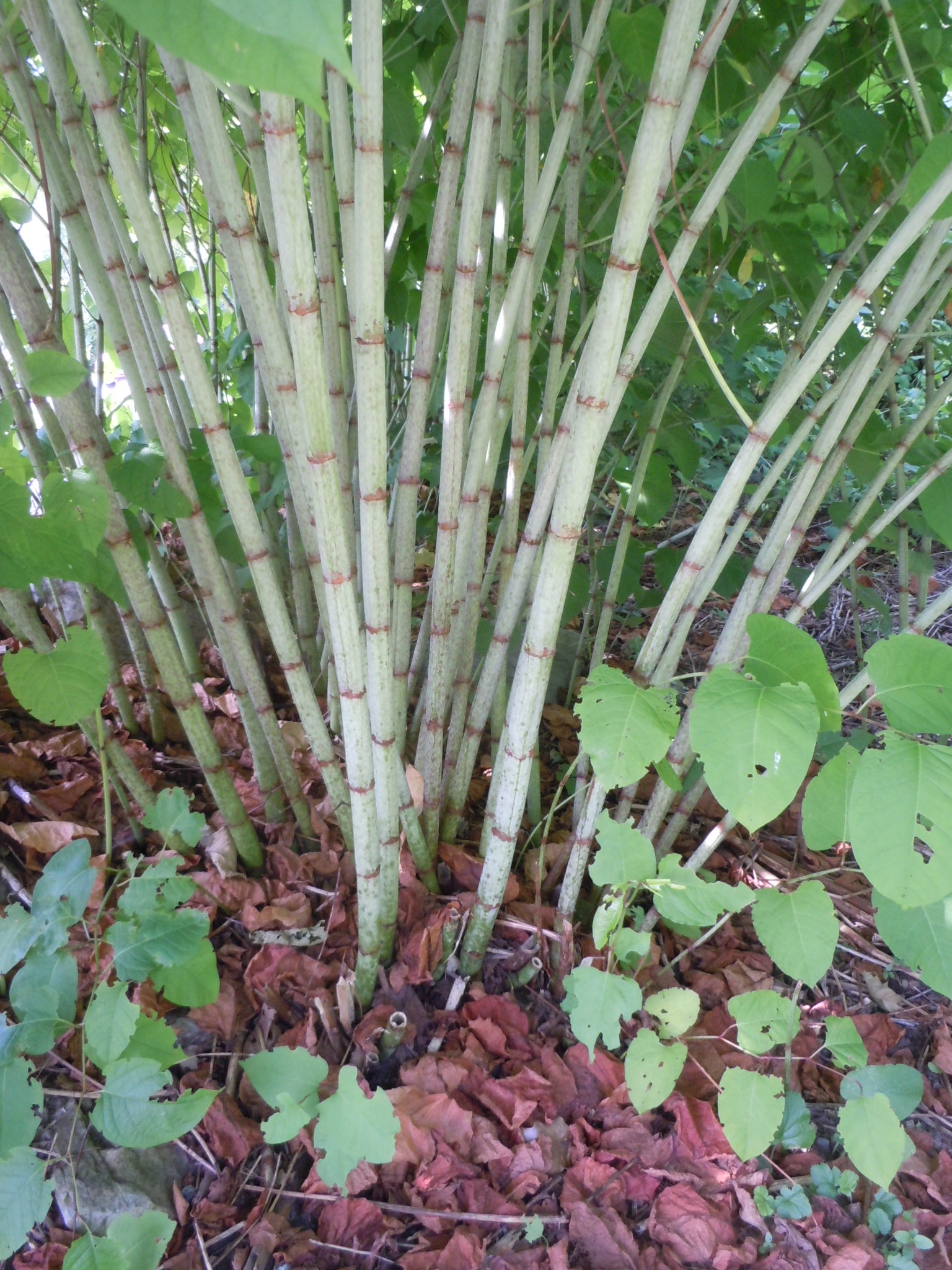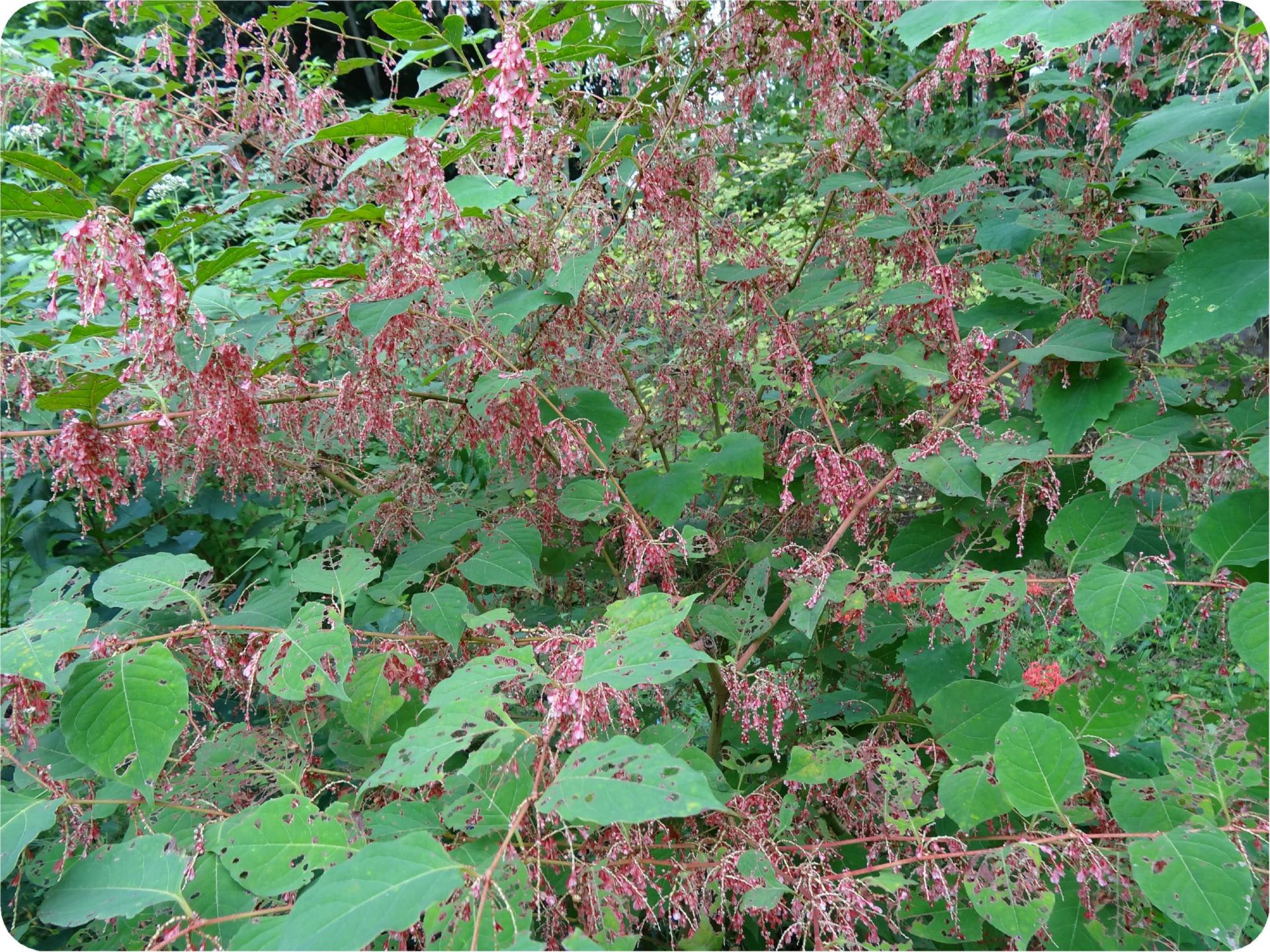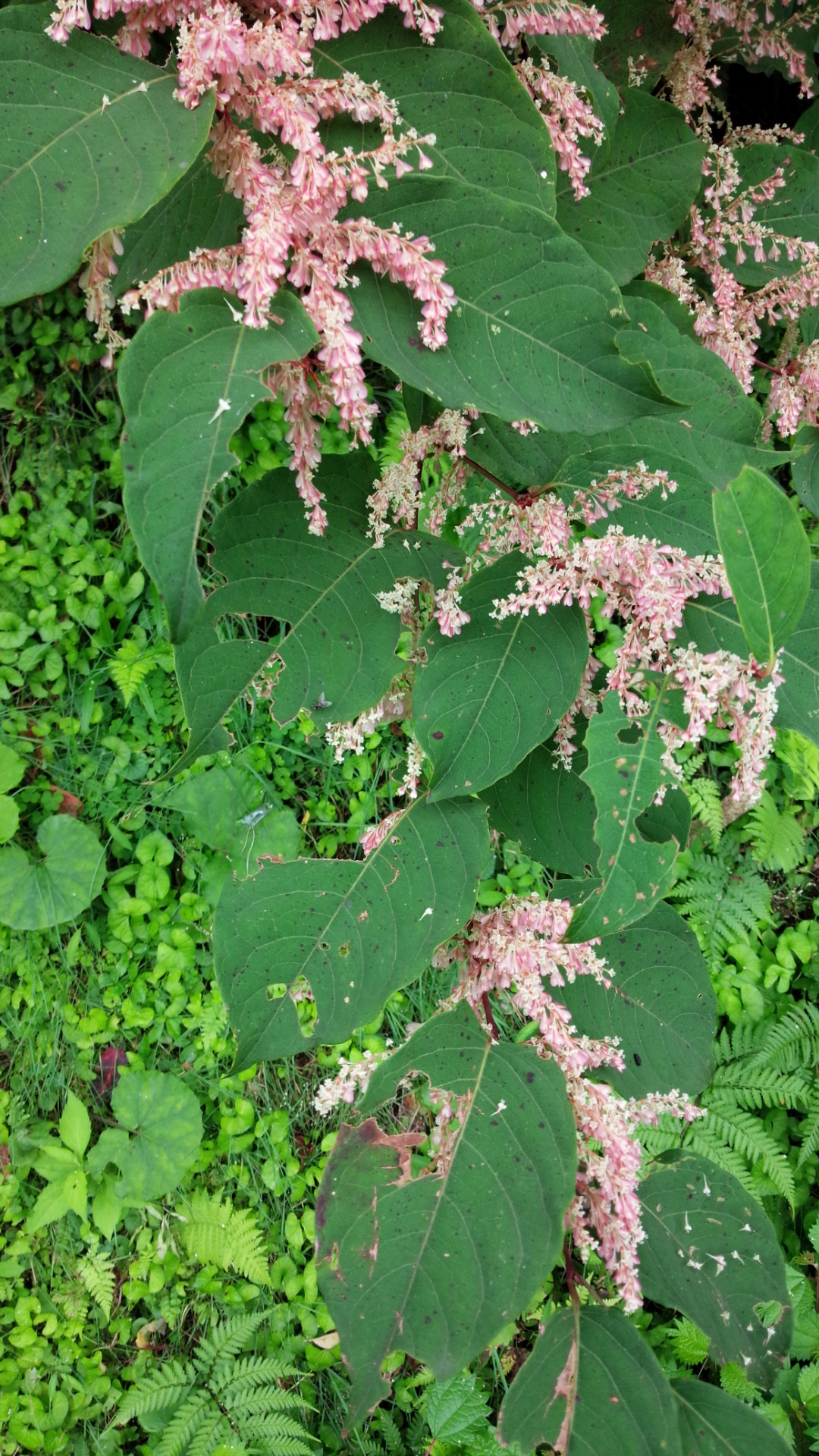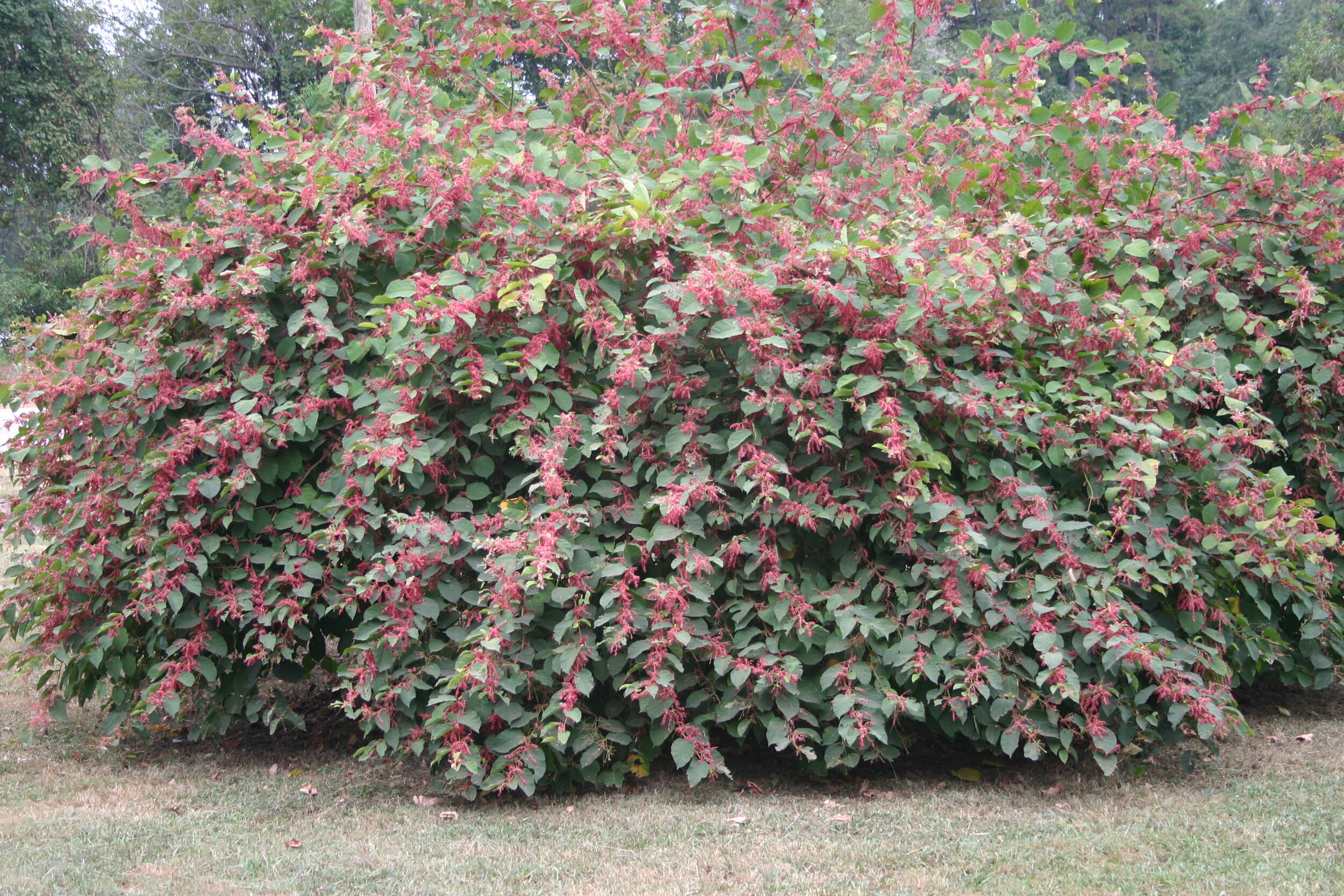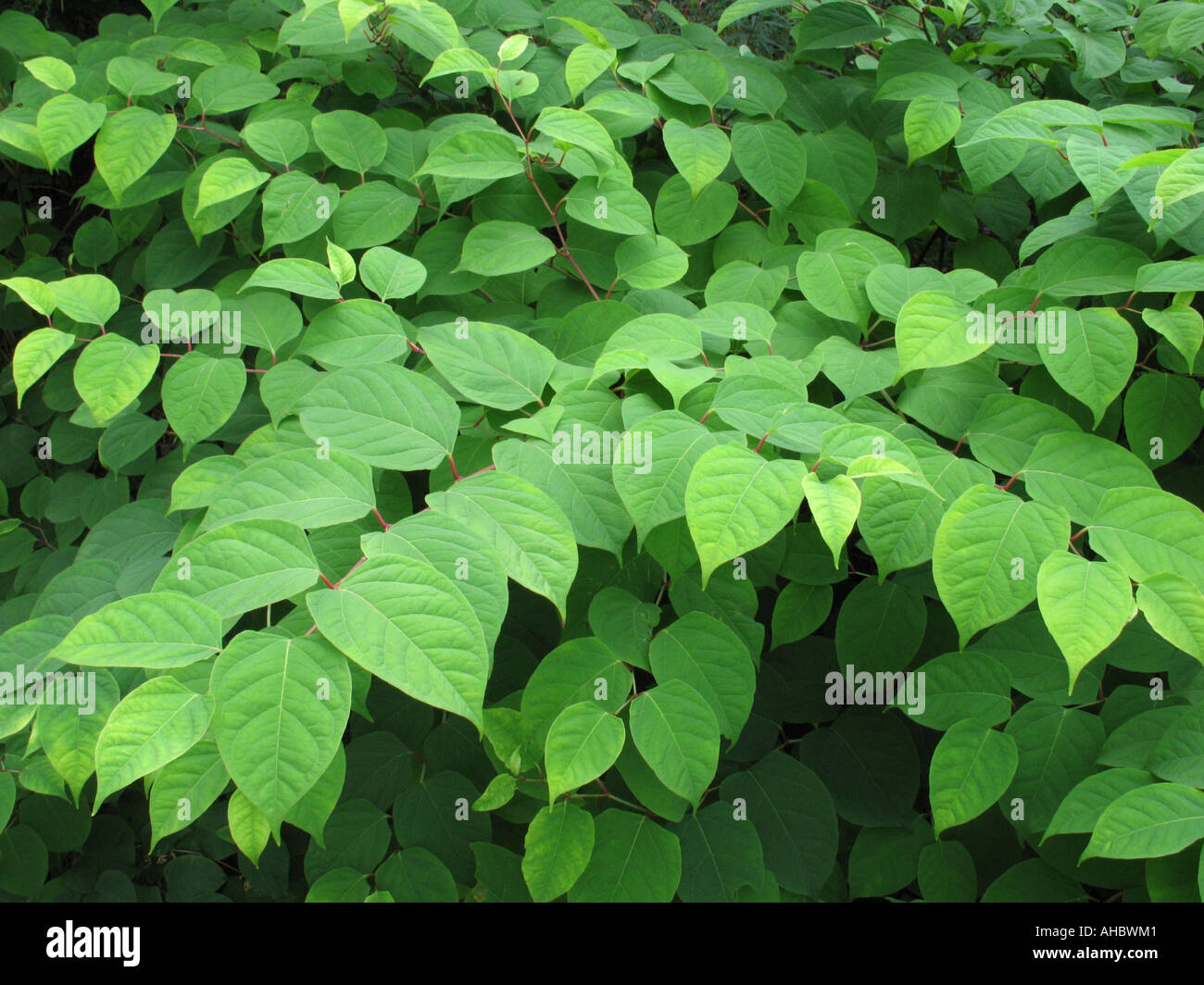Polygonum Cuspidatum Crimson Beauty

Giant knotweed Polygonum sachalinense or Fallopia sachalinense also known as Japanese bamboo sacacline Sakhalin knotweed.
Polygonum cuspidatum crimson beauty. Stems usually clustered erect profusely branched herbaceous stiff glabrous glaucous. In South Carolina the Japanese Knotweed is listed on their Invasive Plant list as a Severe Threat. Red to purple shoots appear early in spring but as the canes grow the leaves unfurl and the plant turns green.
Evolvulus glomeratus Blue Daze 8. NAME OF SPECIES. I believe the P cuspidatum that I have growing is Crimson Beauty and despite the reputation of the species as a dreadful pest this particular cultivar is not a problem.
25 glycophosphate helps on cut stems. Japanese knotweed was probably introduced to the US. Japanese knotweed Polygonum cuspidatum or Fallopia japonica also known as Japanese bamboo Mexican bamboo false bamboo Himalayan fleece vine crimson beauty sally rhubarb fleece flower.
Other sources use the name Fallopia japonica var japonica Houtt Ronse Decraene 6Synonyms. Polygonum cuspidatum Siebold Zuccarini family POLYGONACEAE Treatment Author s Craig C. POLYGONUM CUSPIDATUM CRIMSON BEAUTY Sold Out.
Zucc Japanese knotweed commonly known as crimson beauty Mexican bamboo Japanese fleece flower or Reynoutria was probably introduced to the US. Japanese Knotweed is a highly invasive species native to Asia introduced as an ornamental in the United States in the 1800s. Applied on foliage the plant laughs.
Also known as crimson beauty Mexican bamboo Japanese fleece flower or Reynoutria it was first introduced as an ornamental and has also been used. Polygonum cuspidatum is an upright shrub-like herbaceous perennial that can rapidly grow to over 3m in height Remaley 1997. Fallopia japonica - Japanese Knotweed Crimson Beauty Mexican bamboo Japanese Fleece Flower Reynoutria.
